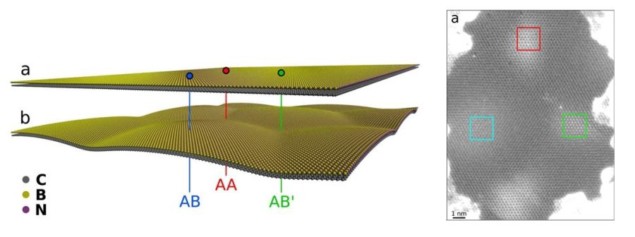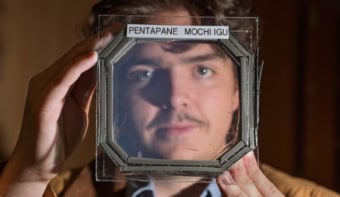
Stacking order and interlayer interactions in suspended graphene/mono-layer hBN heterostructures can now be detected using a novel scanning transmission electron microscopy (STEM) technique. Such suspended van der Waals heterostructures and the 2D materials required to make them have potential applications as nanomechanical actuators and force sensors to name a few.
STEM obtains structural information about thin samples from the deflection or scattering angle of electrons that pass through. Using a custom-made aperture and a pixelated detector, the University of Vienna team – led by Jannik Meyer – measured not only the intensity of scattered electrons in the medium angle annular dark field (MAADF) (60–200 mrad), but more importantly the lateral deflection of the electron beam at every point of the sample. The resulting imaging technique is highly sensitive to the inclination of the sample and the electron scattering profile is heavily dependent on the stacking regime.
Using a combination of empirical results and density functional theory (DFT) calculations, the researchers then created a pair of simulations of the system. One assumed the flake structure was rigid and flat, and the other – called the relaxed model – accounted for out-of-plane distortions in the crystal structure. The latter of these two models was a markedly better fit to the experimental data.
It is well documented that crystallographically aligned graphene and hexagonal boron nitride (hBN) produces a superlattice Moiré pattern of interference fringes. Meyer and his team also show that these out-of-plane distortions have the same periodicity as the Moiré superlattice.
Graphene on hBN is one of the simplest examples of suspended van der Waals heterostructures. The results provide insights into the interlayer interactions and the effects of suspension, which are important for designing more complicated, multilayer devices.
It can no longer be taken for granted that 2D materials remain two-dimensional when incorporated into a van der Waals heterostructure.
The research is detailed in Nano Letters 10.1021/acs.nanolett.6b04360.



